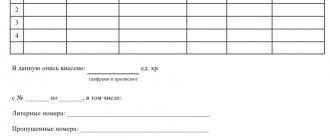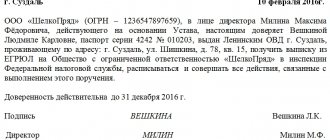Free legal consultation by phone:
8
A request to include documents in the case file is a standard procedure during the consideration of a case. Sometimes during the trial, representatives of the parties receive new evidence that can change the judge’s decision. Documents can only be accepted if they are submitted correctly. From this article you will learn about what papers can be attached to the case and how to do it correctly.
General rules
When is it permissible to include documents in the case file? The Code of Civil Procedure of the Russian Federation establishes that the applicant has the right to present additional evidence after filing the claim in court if it confirms the circumstances included in the object of proof. What does it mean? For example, in claims for unjust enrichment, you can include documents proving the defendant’s good faith. When recovering moral damages, the plaintiff may present an official investigation report, an examination report of a vehicle or a property assessment, etc.
In order for all this evidence to be accepted by the court, it is necessary to file a petition for inclusion in the case materials. A sample of such a document is not specifically described in the legislation. However, since it is part of a court motion, it must meet the general requirements.
What materials can be included in the case?
A party to a judicial conflict has the right to petition for the inclusion of various materials in the case, from documents to direct evidence. In this case, the judge has the right to refuse to include this or that material in the case. As a result, a list of key evidence was developed that can be added to the trial materials:
Documents received from official sources (with appropriate stamps);- Recordings of conversations, it is important that they are of high quality, and it is possible to identify voices;
- Video materials and photographs. Important: The judge has the right to refuse to include such materials in the case if the circumstances under which they were made are unknown. To increase the chance of receiving a positive response to the application, it is necessary to prepare acts of photographing or video production in advance;
- Results of independent examination;
- Data about telephone connections between subscribers.
The list above is not complete, and it indicates only the most common documents and materials that can be included in the case. Moreover, in each individual situation the judge is free to make a decision at his own discretion.
The meaning of a petition to attach additional documents to the case
To begin with, let us note the role of the procedure for presenting evidence to the court. A petition for the inclusion of documents is drawn up in the case when the plaintiff or defendant wishes to confirm or refute certain circumstances.
It must be said that the presentation of additional evidence is not only a right, but in some cases also an obligation of the participants in the process. So, for example, the court can establish it in the ruling on leaving the claim without progress or on accepting the application for proceedings.
Attaching documents to the materials of a civil case: main features of the procedure
In accordance with the provisions of Art. 35 of the Civil Procedure Code of the Russian Federation, persons participating in the case have the right to submit documents to the court both on paper and in electronic form, including in the form of an electronic document.
What documents and evidence can be added to the materials of a civil case in 2021? During the trial, you can use any information to support your position. For example:
- Information obtained from official sources;
- Results of independent examination;
- Photos and screenshots;
- Audio and video recordings;
- Printouts of telephone calls, etc.
It must be borne in mind that in accordance with Art. 59 of the Code of Civil Procedure of the Russian Federation, the court may refuse to satisfy the petition if the significance of these documents for the case under consideration is not confirmed.
That is, documents can be attached to the materials of a civil case if:
- With their help, any circumstance included in the subject of proof is established;
- With their help, factual data already available in the case is verified;
- They deny the existence of certain circumstances.
Document structure
A petition to include documents in the case file can be drawn up in any form. At the same time, one must be guided by established practice and the requirements of the Code of Civil Procedure. The request to include documents in the case file should indicate:
- The name of the court to which it is submitted.
- Full name, address, contact details of the applicant. In some cases, information about both participants in the process is indicated, but this is an optional condition.
- Title of the document. It should be written like this: “A petition to include documents in the case materials.” Instead of the first word, you can write “Statement”.
- Claim number.
- List of documents to be included. The list must indicate not only the names, but also the details of the papers.
- Reasons on which evidence should be accepted by the court. Here the applicant needs to refer to specific rules establishing his rights. We are talking, in particular, about Art. 35 and art. 57 Code of Civil Procedure. The first norm establishes the rights of participants in proceedings, including the provision of documents. The second contains a list of persons who have the right to present evidence.
- Request to the court to consider and satisfy the petition.
- Date of compilation, signature.
Submission of copies of documents from the criminal case materials to the arbitration court
Often in legal practice there is a need to obtain copies of documents from the materials of a criminal case pending in a court of general jurisdiction for their submission to the arbitration court. For example, a lawyer is the defender of a person accused of committing a crime and at the same time represents his interests in the arbitration process. At the same time, the information contained in the materials of the criminal case is extremely important for confirming the arguments in the arbitration court.
If, after considering the petition for the issuance of copies of documents from the criminal case materials, the judge certifies the requested copies, everything is fine. But what if not?
I will try to answer this question and propose an algorithm for action in this case.
Let's consider the procedure for obtaining copies of documents from case materials that are being processed by a court of general jurisdiction or have already been considered by this court and are in the archive.
Record keeping and document flow in courts of general jurisdiction are carried out in accordance with the Instructions for judicial record keeping in the supreme courts of republics, regional and regional courts, courts of federal cities, courts of the autonomous region and autonomous districts, approved by the Order of the Judicial Department at the Supreme Court of the Russian Federation of December 15, 2004 No. 161 (ed. October 28, 2021).
In accordance with clause 12.20 of the Instructions, the right to copy documents from the case materials at one’s own expense, including using technical means, is granted to accused, defendants, convicted, acquitted, their defenders and representatives (clause 13, part 4, article 47, clause 7, part 1, article 53 of the Code of Criminal Procedure of the Russian Federation), victims (clause 12, part 2, article 42 of the Code of Criminal Procedure), the civil plaintiff, as well as his representative in terms of copies of procedural decisions related to the brought claim (clause 13, part 4 Article 44 of the Code of Criminal Procedure), the civil defendant and his representative regarding the materials of the criminal case that relate to the claim (Clause 9, Part 2 of Article 54, Part 2 of Article 55 of the Code of Criminal Procedure), the parties and other persons participating in the civil case, administrative case, as well as their representatives (Part 1 of Article 35 of the Code of Civil Procedure of the Russian Federation, Article 45 of the Code of Arbitration Procedures of the Russian Federation), rehabilitated persons, and with their consent or in the event of their death - relatives (dependents) in terms of familiarization with the materials of terminated criminal and administrative cases cases and obtaining their copies (Article 11 of the Law of the Russian Federation of October 18, 1991 No. 1761-1 “On the rehabilitation of victims of political repression”).
All listed persons make copies upon written application in the manner established by the chairman of the court or the judge presiding over the case. The application with the permitting resolution is filed in the court case. It is important to note that materials copied by these persons, including using technical means, at their own expense are not certified by the court.
At the same time, as stated in Part 8 of Art. 75 of the APC, written evidence is submitted to the arbitration court in the original or in the form of a duly certified copy1. If only part of the document is relevant to the case under consideration, a certified extract from it is submitted.
In accordance with Part 6 of Art. 71 of the Arbitration Procedure Code, the arbitration court cannot consider as proven a fact confirmed only by a copy of a document or other written evidence if the original document is lost or not submitted to the court, and the copies of this document presented by the persons participating in the case are not identical to each other and to establish the true content of the original source impossible with the help of other evidence.
GOST R 7.0.97-2016 “National standard of the Russian Federation. System of standards on information, librarianship and publishing. Organizational and administrative documentation. Requirements for the preparation of documents”, approved by Order of Rosstandart dated December 8, 2021 No. 2004-st, provides for the procedure and form for certification of copies of various types of documents. A copy certification mark is issued to confirm the compliance of the copy of the document (extract from the document) with the original document (clause 5.26 of the Standard). A mark on certification of the copy is placed under the “signature” attribute and includes: the word “True”, the title of the position of the person who certified the copy, his handwritten signature and its transcript (initials, surname), the date of certification of the copy (extract from the document). If a copy is issued for submission to another organization, a note on the certification of the copy is supplemented by an inscription about the storage location of the document from which the copy was made (“The original document is located in (name of organization) in file No. ˂…˃ for ˂…˃ year”), and certified by the seal of the organization. A stamp may be used to mark the certification of the copy.
Proper certification is also explained in Art. 77 Fundamentals of the legislation of the Russian Federation on notaries (approved by the Supreme Court on February 11, 1993 No. 4462-1 as amended on December 30, 2021), according to which the notary certifies the accuracy of copies of documents and extracts from documents issued by state authorities, local authorities self-government, legal entities, citizens (Part 1 as amended by Federal Law No. 379-FZ of December 21, 2013).
The procedure for certification of copies of documents emanating from organizations was also approved by paragraph 1 of the Decree of the Presidium of the USSR Armed Forces of August 4, 1983 No. 9779-X (as amended on December 8, 2003) “On the procedure for issuing and certification by enterprises, institutions and organizations copies of documents relating to the rights of citizens,” according to which state and public enterprises, institutions and organizations issue, upon applications from citizens, copies of documents necessary to resolve issues relating to the rights and legitimate interests of applicants. Copies are issued on the letterhead of enterprises, institutions and organizations.
So, when participating in the arbitration process as a representative of a party, a lawyer may be faced with the need to present to the court, in order to confirm his arguments, a copy of the interrogation protocol of a person interrogated as part of the preliminary investigation, or another procedural document located in the materials of the criminal case. At the same time, for the reasons stated above, it is possible to make a copy of the necessary documents contained in the case, but the court is not obliged to certify it (clause 12.20 of the Instructions).
Is the citizen’s right to present evidence contained in the criminal case materials to the arbitration court violated in this case? I think no.
In this case, the party to the arbitration dispute provides to the arbitration court a copy of the application submitted to the court of general jurisdiction (with a mark (stamp) of the court on its acceptance) for the issuance of copies of documents from the materials of the criminal case and the copies themselves.
Thus, the specified person (his representative) presents to the arbitration court evidence that he has applied to a court of general jurisdiction for the relevant information or copies of the materials of the criminal case, and also that the information contained in the specified documents is relevant to this dispute, and the original documents are in the materials of the criminal case cases and according to clause 12.20 of the Instruction cannot be certified by the court.
If the arbitration court has questions regarding the authenticity or completeness of the submitted copy, it has the right to request - including on its own initiative - the materials of the criminal case containing the relevant document.
So, in accordance with Part 4 of Art. 66 of the Arbitration Procedure Code, a person participating in a case and not having the opportunity to independently obtain the necessary evidence from the person who has it, has the right to apply to the arbitration court with a petition to request this evidence. The petition must indicate the required evidence, indicate what circumstances relevant to the case can be established by this evidence, as well as the reasons preventing the receipt of the evidence, and its location. It is important to take into account that materials from a criminal case (namely, individual protocols of investigative and procedural actions), as a general rule, are subject to verification and evaluation in their entirety by the court considering the criminal case on the merits, and only when making a final decision.
In this regard, in my opinion, it is more correct to refer to the materials of criminal cases only if there is a verdict that has entered into legal force.
1 A certified copy of a document is understood as one on which, in accordance with the established procedure, the details are affixed to ensure its legal significance (subclause 25, clause 3.1 of GOST R 7.0.8-2013 “National standard of the Russian Federation. System of standards for information, library and publishing case. Records management and archiving. Terms and definitions", approved by Order of Rosstandart of October 17, 2013 No. 1185-st).
Submitting an application
A request to attach any documents to the case can be submitted directly during the meeting. It is advisable to do this before considering the evidence presented by the parties. It is most advisable to submit a request to include documents in the case file at a preliminary hearing.
Please note that you can also make a request to the appellate court. Here, however, it is necessary to take into account the peculiarities of the presentation of evidence, enshrined in procedural legislation.
A request to include documents in the case file can be submitted through the court office. This can be done both before the start of the trial and during it. In any case, however, the petition must be submitted in triplicate. One remains in court, the second is transferred to the other party, and the third is taken by the applicant. On the last copy, the office employee puts a mark of acceptance.
Another way to submit a petition is to send it by letter (preferably registered and with acknowledgment of receipt). A copy for the other side must be included in the envelope.
Drawing up a petition
We advise you to read:
- ✅ Request to leave a statement of claim without consideration: sample
- ✅ Application for restoration of a missed procedural deadline
- ✅ Sample claim for recognition of ownership of real estate
- ✅ Sample claim for collection of funds by receipt
As a rule, the inclusion of case materials is intended to prove certain circumstances in the case under consideration. In some cases, the court itself may request such documents; in other situations, the provision of materials is a necessary condition for filing a claim and its acceptance into proceedings. Without these documents, the plaintiff simply will not be able to file a claim. Sometimes the need to defend one's own position arises during the proceedings.
When drawing up an application, you must take into account that it must contain:
- A list of documents required for inclusion in the case, the circumstances that they can confirm and the purpose of inclusion in the case;
- Please attach materials to refute or confirm the information.
It is important to understand that the documents that will be provided to the court will become evidence. It is necessary to determine how permissible they are and how they relate to the case. If the court has received copies of documents, the applicant must bring the originals with him to the trial. If the originals are not available, you must submit an application to claim them.
The legislation does not provide clear rules regarding the registration of an appeal. But a certain structure must be followed during the preparation of the document. This will avoid delays.
The application can be submitted before the start of the proceedings, and it does not matter at all which authority is considering the case. It implies several direction options:
- A letter issued with notification. This case requires a detailed list of submitted documentation;
- Filing at a court hearing. You must appear at the courthouse where the civil case is being heard and file a petition yourself.
Prepare 2 copies of the document. You will give 1 copy to the court office, the other (with the date, stamp and signature of the person responsible for receiving materials) you will keep for yourself. You can write a petition with the involvement of a lawyer and without the help of a professional.
Necessity
- as required by current legislation;
- in the case when, based on copies, it is not possible to make a decision;
- when discrepancies between the copy and the original are detected.
Only the judge is authorized to decide whether the submitted papers need to be attached to all the materials of the dispute or not.
ATTENTION! Documents that were attached as additional evidence may be returned at the end of the court hearings, or during their course after familiarization with the paper.
Attaching photo and video materials
They are subject to certain requirements in 2021. If the materials do not meet these requirements, the judge will reject the request for their inclusion. Basic requirements for photo and video materials:
- The applicant must indicate in what way, under what circumstances, when, and with what device these materials were obtained. Be sure to indicate the location, exact date and approximate time, as well as the name of the gadget used to take the photo.
- Materials must not violate the right to integrity and privacy as defined by the Constitution . In this regard, photos and video materials can only be obtained in public places. Otherwise, you will have to first obtain consent to take photos or videos.
- The footage must be of good quality. The image must clearly convey the events, faces, etc. of interest. Otherwise, the inclusion of materials in the case will be refused.
There are a number of points in which submitted materials remain without consideration. Chapter 222 of the Code of Civil Procedure contains a list of situations in which a petition along with the attached papers remain unaccounted for:
- The applicant or plaintiff did not comply with the procedure established by law before the judicial settlement of the conflict situation.
- One of the parties is declared incompetent . An exception to this situation is the plaintiff’s appeal to the court to recognize the person as legally competent.
- The petition is executed, presented, or signed by a person who is not authorized to do so.
- There is a similar case pending before this or another court, in which the parties to the dispute are the same persons, and the subject of the dispute is similar.
- By agreement of the plaintiff and defendant, the case is referred to the arbitration court . There is also a refusal on the part of the defendant to consider the dispute in court.
- The parties who did not seek judicial resolution did not appear at the secondary appeal hearing.
- The plaintiff, who did not insist on resolving the issue in court, did not appear at the hearing, and the defendant did not insist on a court hearing in the absence of the plaintiff.
It is worth noting that the request for the inclusion of materials related to additional evidence may be contested by the other party.
How to submit a petition correctly
There are three options for sending a petition to the court:
- Before the start of the court hearing. For this purpose, the application must be submitted in two copies. One goes to the applicant. It is numbered and stamped by the employee who accepted the document.
- During the court hearing. At the beginning of each hearing, the judge invites the participants to provide additional materials that have not yet been added to the case file.
- Send by registered mail with notification.
- Transfer through an authorized person - a lawyer, or a person who has an official power of attorney.
- Send by email.
This method is common, but not available to all judicial enforcement authorities.
ATTENTION! Before sending such materials via the Internet, you must obtain a sample of the electronic signature, which is provided at the certification center.
Before sending, you must check whether this shipping method is available for your vessel.









